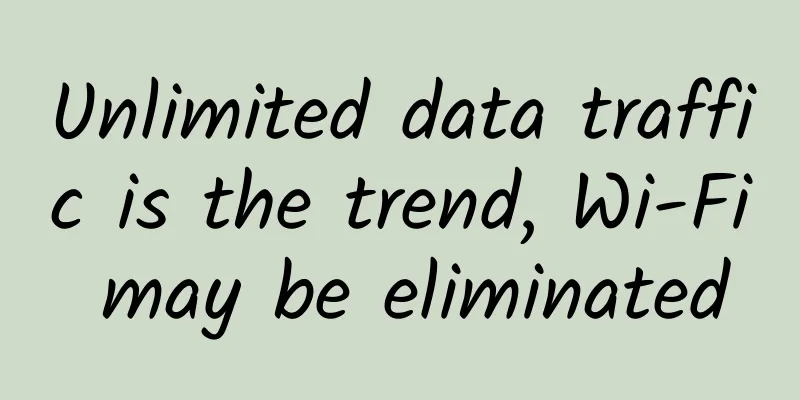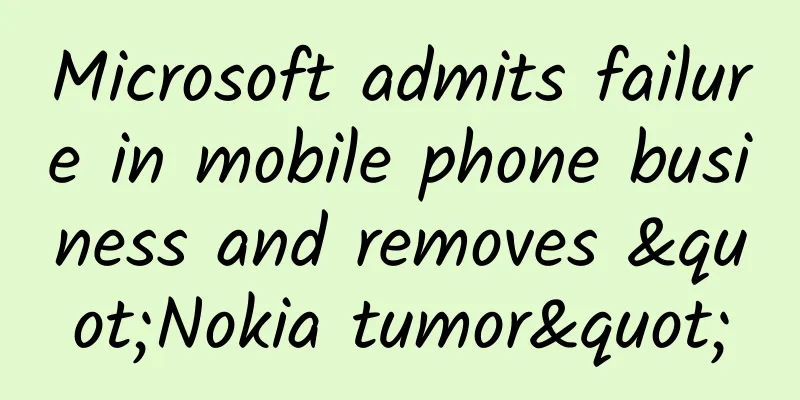Unlimited data traffic is the trend, Wi-Fi may be eliminated

|
Bloomberg published an article today saying that whether it is a mobile phone, a smart thermostat, or a TV, there is a "Wi-Fi" icon on almost every Internet-connected device. But I believe that soon, WiFi will be forgotten by people. Currently, major mobile operators in the United States all provide unlimited data traffic services, and consumers no longer need to turn on Wi-Fi networks to avoid expensive traffic fees. This is a major change that may cause WiFi to exit the stage of history in the future. In addition, the emergence of some new technologies has also made the prospects of WiFi bleak. It is expected that in the near future, the proportion of consumers using WiFi in public places (such as stadiums and airports) will drop from the current 1/2 to 1/3 of the total mobile data traffic. Barry Gilbert, an analyst at research firm Strategy Analytics, said that this means that companies will no longer upgrade public WiFi access, and consumers will not even turn on the "Wi-Fi" function. "At Sprint, unlimited data traffic has become standard, and consumers no longer need to watch videos on Wi-Fi," said Craig Moffett, an analyst at research firm MoffettNathanson. "Consumers are rational. When price incentives favor WiFi, they use Wi-Fi more. When price incentives shift, consumer behavior also changes." Of course, the erosion of Wi-Fi's influence may be a slow and bumpy process. Unlimited data traffic services make WiFi irrelevant for mobile phones, but other devices in the home, from MacBooks to Amazon Echo, still use WiFi to connect to the Internet. In addition, WiFi is also needed to supplement some office buildings or family homes where there is no mobile signal or the mobile signal is unstable. However, unlimited data traffic is not the only threat to WiFi. WiFi has been around for 20 years and has spawned an industry of about $20 billion. But now, it is facing challenges from some other emerging technologies. Wi-Fi alternative technology: LTE-U For example, a new system called "LTE-U" (LTE in Unlicensed Spectrum) uses unlicensed spectrum to increase available network traffic for cellular data communications, that is, a technical solution for deploying LTE on the WiFi band. In the past few decades, unlicensed spectrum has been mainly used in areas such as garage remote controls, cordless phones and baby monitors. But now it has been fully applied to Wi-Fi networks, connecting smartphones, laptops, set-top boxes, video game consoles, and a series of other smart devices connected to the Internet. With the popularity of LTE-U, Wi-Fi may take a back seat. For users, they can switch seamlessly between mobile cellular networks and LTE-U networks without noticing any changes. On current public WiFi networks, users log in to different networks and enter passwords every time. In addition, LTE-U requires fewer supporting devices. For example, for a 180,000-square-foot building (about 16,700 square meters), only 24 new access points are needed. For Wi-Fi, 80 hotspots are needed. "LTE will go into homes and businesses, and Wi-Fi will be phased out," said Chetan Sharma, an independent wireless analyst. Wi-Fi alternative technology: CBRS Another new technology that could pose a threat to WiFi is called "CBRS," or "Citizens Broadband Radio Service." The new technology allows anyone to share a large amount of spectrum resources currently used by the U.S. Navy. CBRS uses the 3.5GHz band, which is an unlicensed band in the United States and is currently used by the U.S. Navy for radar applications. But since 2013, Google and other companies have been lobbying the Federal Communications Commission (FCC) to open the band for mobile broadband applications. In August 2016, Google, Nokia and Qualcomm officially announced a joint collaboration to conduct research on 3.5GHz networks. In February of this year, the three companies conducted the first live demonstration of a private LTE network using 3.5GHz shared spectrum on the Las Vegas Freeway. Michael Peeters, president of the CBRS Alliance, said CBRS is more reliable than Wi-Fi and may be a better choice for places such as factories, airports and ports. 5G is the killer Among all the threats, 5G may become the killer of WiFi. Under the 5G standard, consumers can download a high-definition movie in less than a second. By using CBRS, mobile operators can deploy 5G networks faster and easier. Because they can use the shared 3.5GHz band without obtaining spectrum authorization through auctions or other transactions. In the near future, WiFi may disappear from people's daily lives. "Before, I had to find a WiFi hotspot, which was too inconvenient for me. Now, I don't have to do that anymore," said Michael Kimbroug, an entrepreneur in Alabama. As a winner of Toutiao's Qingyun Plan and Baijiahao's Bai+ Plan, the 2019 Baidu Digital Author of the Year, the Baijiahao's Most Popular Author in the Technology Field, the 2019 Sogou Technology and Culture Author, and the 2021 Baijiahao Quarterly Influential Creator, he has won many awards, including the 2013 Sohu Best Industry Media Person, the 2015 China New Media Entrepreneurship Competition Beijing Third Place, the 2015 Guangmang Experience Award, the 2015 China New Media Entrepreneurship Competition Finals Third Place, and the 2018 Baidu Dynamic Annual Powerful Celebrity. |
Recommend
KOL Marketing: Why are couple KOLs more popular among advertisers?
Seemingly influenced by the advancement of the “s...
Bleeding gums, is it caused by "heat"? The answer is...
Author: Zheng Shuguo, Chief Physician, Peking Uni...
These Winter Olympics events are most prone to injuries! How to prevent them?
As the opening of the Beijing Winter Olympics dra...
If aliens come, can humans hide if they can't defeat them?
This article is based on answering similar questi...
3 tips to increase followers on Zhihu for free!
Many people understand that I often change my ide...
Cooperative SEO training: Why can’t I rank high after doing so much?
When we do website optimization, we must combine ...
Ask the App Store Beginner's Guide Everything you need to know is here!
Since its debut at the "Mobvoi•Creation Day&...
How to organize an event with almost zero budget, free event
Last time a colleague told me that their annual g...
7 essential skills for operations - marketing promotion steps!
A correct marketing promotion process Marketing pr...
Fried! Grilled! Smoked! Why is it so delicious?
The process of cooking food is also the process o...
Hello "F9C22", warm welcome!
Sometimes diving to the bottom of the water, some...
The tempting mobile Internet is both a poison and an antidote for small and medium-sized enterprises
In just four or five years, the number of mobile ...
[Popular Science of Chinese Military Technology] What can artificial intelligence do? Is it equivalent to autonomy?
When talking about artificial intelligence, we ha...
I really want to ask: Why don’t the colors squeezed out of the colored strip toothpaste mix together?
Speaking of color striped toothpaste, I believe m...









